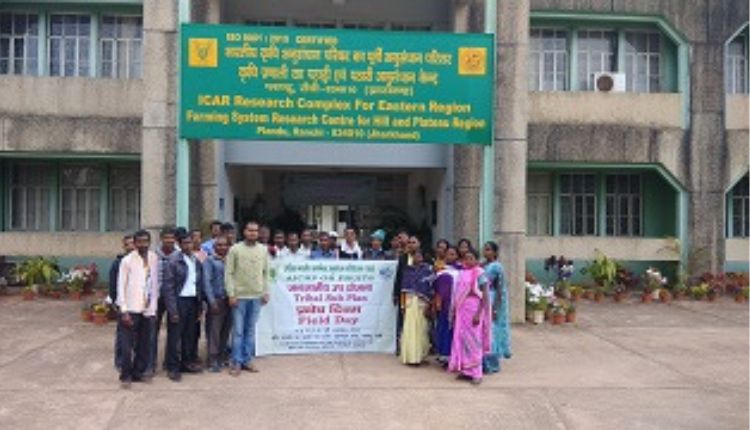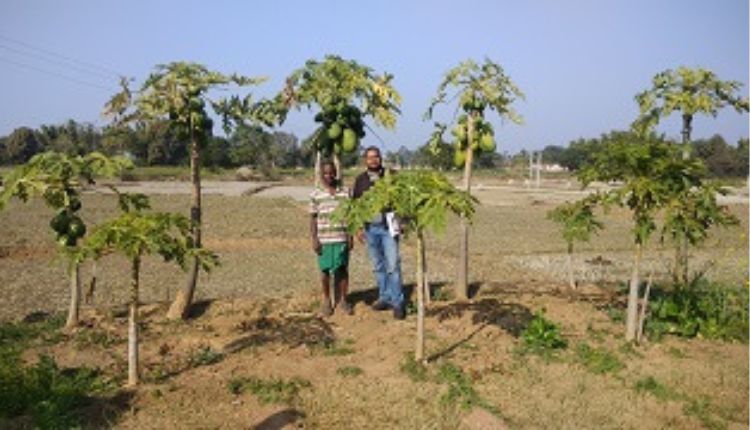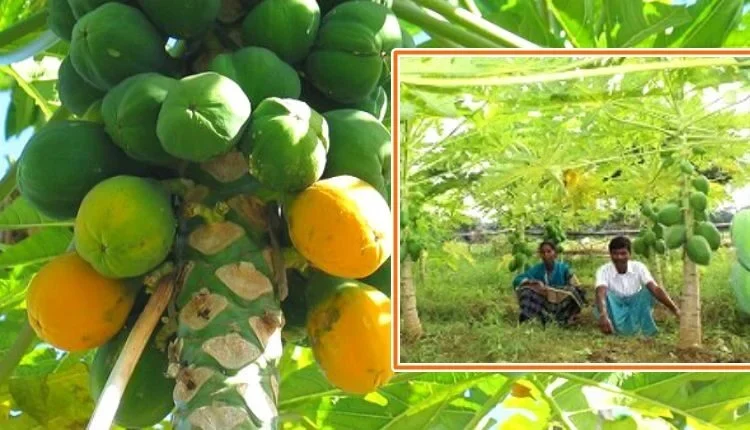Papaya Cultivation: Scientific cultivation of papaya made the life of tribal farmers better, Rupwanti didi learned and changed the equation
1300 tribal farmers participated in the 8 Extensive Field Training
Papaya is one of the important fruit crops in Jharkhand. This crop is mainly grown in the backyard garden of the houses in the state. Even though being grown in the homestead and consumed by the farmers, the scientific papaya cultivation is at its infancy among the state’s tribal farmers.
The farming system research centre for hill and plateau region, Ranchi of ICAR-RCER undertook the technology demonstration on scientific papaya cultivation during 2018-19 in Ghumla, Rnchi and Lohardaga district of Jharkhand. The main purpose of them was bridging the gap. The demonstration was carried out under the Tribal sub plan of ICAR-All India coordinated research project on fruits.
An NGO named PRADAN (Professional Assistance for Development Action) working in the field of farm livelihood giving its hand –holding support to mobilize the tribal farmers. About 1300 tribal farmers participated in the 8 extensive field training along with exposure visits on scientific papaya cultivation, before planting.
Planting of three seedlings and removal of male plants increased the production by 30% – 40%
The technology demonstration took place in more than 600 tribal farmers’ fields (30,000 plants) mainly with three papaya varieties – Red lady, NSC902 and Ranchi local. The farmers were mostly growing Ranchi Local variety in the backyard gardens because of its hardness and less susceptibility to pests and diseases. However, only 50% – 60% plants produce fruits, being dioecious in nature. This problem has to be resolved. So, they undertook a technology demonstration on “planting of three seedlings per pit and removal of male plants after initiation of flowering” in the farmers’ fields. This practice proved to be beneficial for the farmers as it gave 80% – 90% fruiting plants and increased the production by 30% – 40% over the traditional method of planting of Ranchi local variety.
A farmer earned Rs 15,950 by cultivating Ranchi Local Papaya Variety
A farmer Roopvanti didi of village Dubang of Lohardaga district planted 45 papaya plants of variety Ranchi local in an area of nearly 200 square metre. After planting as per the demonstration, she obtained 38 fruiting plants. After plants attained 5 – 7 months of age, she started selling vegetable papaya. After selling 65 % of her produce as vegetable papaya, her net income was Rs 8,550. She sold rest of her produce as ripe fruits with net income of Rs 7,400 after 10 – 13 months of planting. In this way, she earned a total of Rs 15,950 by cultivating ‘Ranchi local’ papaya variety.

The demonstration of the micro-nutrient application, especially boron application (0.3%) was carried out among the farmers. The boron application has been proven to be beneficial for the farmers as it minimizes the flower and fruit drop to the tune of 22% – 35% and it also increased the yield up to 15% – 20%, irrespective of the varieties. The papaya ring spot virus is a major disease in the region. In order to limit the spread of this disease, they followed an integrated approach by planting disease-free seedlings, avoiding the virus-host plants, uprooting of weeds, spray of neem oil and use of systemic insecticides. The PRSV incidence was minimized up to 50% – 60% by adopting this approach.

Boosts the farmers’ income
Initiative has proved to be a real help for farmers. It boosts the farmers’ income to the range of Rs 1,200 to Rs 1,75,000 depending upon the area of cultivation and management practices adopted. Due to this initiative, farmers from other villages were inspired towards papaya cultivation.
The demand of the planting material and the opportunity of entrepreneurship development among the tribal farmers has been rising. So, by considering this, it was decided to promote the papaya nursery in the region through participatory mode.
Also Read: Tomato Cultivation: Nethouse technology adopted to reduce cost in tomato cultivation
16 progressive farmers took the training on “Improved Papaya Nursery Raising” from the Gumla and Lohardaga district. They were also provided with the necessary inputs like poly bags and papaya seed under the Tribal sub plan of ICAR-AICRP on fruits.
Trained papaya nursery growers produced and sold more than 28,000 papaya seedlings to nearly 1,000 farmers of Lohardaga and Gumla districts during the months of April – May 2020. In a period of three months, the entrepreneurs could earn an average profit of Rs 12,000 by selling the plant at an average rate of Rs 10 per plant.
“Improved Papaya Nursery Raising’ training proved to a boon for the farmers
COVID-19 has proved to be an ominous event for everyone. So, the additional income from the nursery particularly, during the lockdown has been a boon for the farmers. The other tribal farmers have also been inspired by seeing the profit earned by the papaya growers under the Programme. It acted as the eye opener for other tribal farmers. The government of Jharkhand has also started promoting the papaya cultivation among the tribal farmers under the different state and centrally sponsored schemes during the last 2 years. It is hopeful that scientific papaya cultivation of scientific institutions can prove to be an effective income-generation activity. Hopefully, it will generate income for the migrant labourers of the district in the forthcoming years.
Contact us – If farmers want to share any valuable information or experiences related to farming, they can connect with us via phone or whatsapp at 9599273766 or you can write to us at “[email protected]”. Through Kisan of India, we will convey your message to the people, because we believe that if the farmers are advanced then the country is happy.



